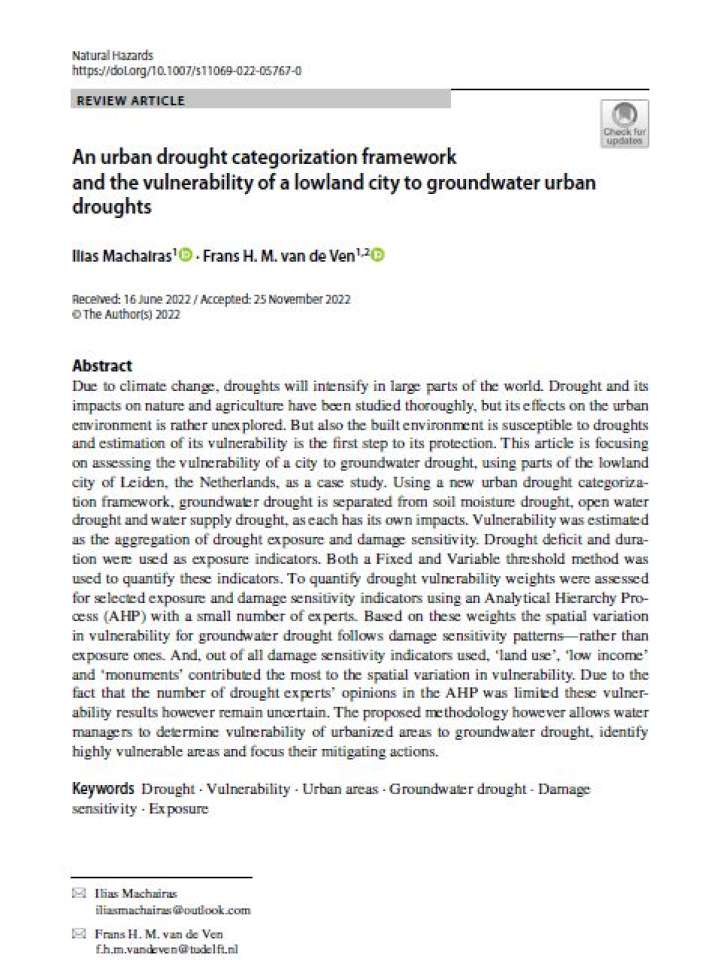An urban drought categorization framework and the vulnerability of a lowland city to groundwater urban droughts
This article is focusing on assessing the vulnerability of a city to groundwater drought, using parts of the lowland city of Leiden, the Netherlands, as a case study. Using a new urban drought categorization framework, groundwater drought is separated from soil moisture drought, open water drought and water supply drought, as each has its own impacts. Vulnerability was estimated as the aggregation of drought exposure and damage sensitivity. Drought deficit and duration were used as exposure indicators. Both a Fixed and Variable threshold method was used to quantify these indicators.
To quantify drought vulnerability weights were assessed for selected exposure and damage sensitivity indicators using an Analytical Hierarchy Process (AHP) with a small number of experts. Based on these weights the spatial variation in vulnerability for groundwater drought follows damage sensitivity patterns—rather than exposure ones. And, out of all damage sensitivity indicators used, ‘land use', ‘low income' and ‘monuments’ contributed the most to the spatial variation in vulnerability. Due to the fact that the number of drought experts’ opinions in the AHP was limited these vulnerability results however remain uncertain. The proposed methodology however allows water managers to determine vulnerability of urbanized areas to groundwater drought, identify highly vulnerable areas and focus their mitigating actions.
Explore further
